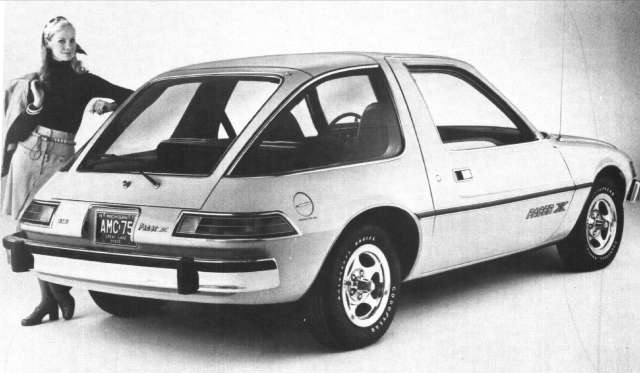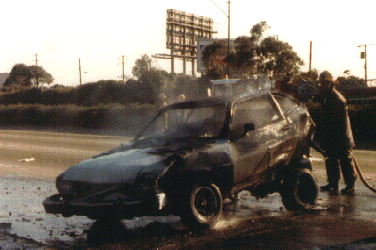(The technologically advanced but technologically challenged Chevy Volt. Photo GM.)
Some of the press is all over the Volt debacle this morning. General Motors reached another milestone when it announced late Friday that they were suspending production of the amazing Chevy Volt for five weeks due to lack of demand.
The Volt is an attempt by GM to meet the administration’s pledge to put 1 million electric cars on the road. I think it might actually be a demonstration that you cannot mandate engineering success from Washington, and I think I have seen some of this movie before, the one in which the market determines what is going to happen, rather than the government.
The hybrid gas-electric vehicle gets 25 miles on a full, overnight charge and costs around $40,000. To date, GM has sold around 10,000 vehicles. To put it in perspective, the Chevy Corvette has a sticker price of $49,600, and which one would you be driving? The ‘Vette has a cruising range of three hundred miles or so, and will get you there reliably.
I don’t recall if I have written about the last adventure I had with not-ready-for-prime-time technology. If I have, bear with me. I will never forget the famed GM product rolled out too soon in response to the fuel crisis of the early 1970s- the Chevy Vega.
The little car was neat, just like the Volt is in many ways, but shared the same problem: the means of primary locomotion was seriously flawed. In the case of my little Vega wagon, the other similarities are downright eerie. The Vega received praise and awards at its introduction, including the prestigious (and political) award of “Car of the Year” by Motor Trend Magazine.
(I added an aftermarket spoiler to the lift gate on my Vega, but otherwise this is what she looked like. Photo GM.)
The Vega subsequently was known for a wide range of engineering-related problems. These included reliability, safety, a propensity to rust and the stupid innovative engine. In the case of my Vega, my very first new car, the aluminum motor burned a half quart of oil with each tank of gas. I had never experienced that in any of the dozens of family cars we had- Dad got a new one every year as part of his contract with American Motors, and often got loaners of models from the competition for evaluation purposes.
Hell, the loaners might have been just for fun- I mean, Dad and his co-workers were all car guys and they loved them. I came home from school one day to find a Ferrari Mexico Coup and a new Corvette in the driveway- and wished they had stayed a little longer.
GM had been working on a prototype small car since the early and mid 1960s- part of a lingering requirement to have something to bring to market just in case the niche market of modestly-sized and fuel efficient vehicles pioneered by George Romney ever came back in fashion. American Motors had lost their way with the departure of George to try his hand at politics at the State and then national level. They hired veterans of Ford to come in and manage the long decline in which there were brief points of light- I am thinking of the AMX, Javelin, Rebel and the remarkable Hurst Scrambler, in which the biggest V-8 the company built was stuffed into the smallest and lightest body they produced- the Rambler American.
(1969 AMC Hurst Scrambler. Those things screamed. Photo Socotra)
The Scrambler was a car that carried excitement- they could blow away the contemporary muscle cars from Pontiac and MoPar and the Ponies from Ford. But it was the last gasp of performance from a company that also rolled out the famed Gremlin (we had at least two of them) and the over-the-top Marlin and the purely bizarre Pacer, which was based at least in part in some of Dad’s old concept drawings from the 1950s.

(AMC’s astonishing Pacer, 1975. Photo AMC via Chrysler via Fiat.)
AMC was doomed because its management attempted to compete in the sweet spot of the Big Three, and the market was having none of it. you would think that when the OPEC shock swept through the economy they would have reverted to the concept that brought them original fame- the small, fuel efficient car. GM and Ford had been working on the idea, not exactly on the front burner, but they had the resources to assign engineering and styling teams to work the matter, something cash-strapped AMC did not.
GM president Ed Cole oversaw the Vega’s genesis and drove it to meet the projected schedule. “Teaser” ads began in May 1970, sort of like the hype about the Volt that promised all sorts of things in terms of range and reliability, but then GM withheld the model name, saying “You’ll see.” It reminds me of the campaign to market the weird Segue roll-around that was supposed to change the world.
(Oil prices from 1861 to present. The OPEC embargo is the first big spike to the right- but imagine if this were adjusted for inflation!)
Which brings us to the oil crisis of 1973. It started in October of that year as you recall, and there are all sorts of interesting actors who are not only still with us, but who are doing their turn on the stage as we begin the long slide down to the election this year. The Organization of Petroleum Exporting Countries- OPEC- plus Egypt, Syria and Tunisia- announced an embargo against the US in response to President Nixon’s decision to re-supply the Israeli army after the shock of the Yom Kippur War.
I could wander off on the similarities between this coming season and that one not so long ago, but I will not trouble you. In both, however, there was no actual shortage of commodity. OPEC turned off the spigot then, and today, speculative pressures based on a possible incursion by the Israelis against the Iranians and the prospect of military action in the Strait of Hormuz are driving up prices at the pump.
I don’t know if this is going to result in a parallel drive toward highly efficient gas-powered cars- there are plenty of them out there, but our latest government-induced compulsion to reduce CO2 stems from desperate fear of Global Warming- I meant Climate Change, of course- which also has an eerie parallel to the early 1970s, when climate experts were telling us quite sternly that the Ice Age was returning.
But the backdrop was not my concern at the time. I just needed a car to get started, and the Vega made sense from a variety of perfectly reasonable aspects. My first job paid less than $10,000 a year, and oil spiked up to around $50 a barrel rapidly from a fairly steady baseline of under $20. Accounting for constant dollars would make the graph much more spectacular.
The Vega and the oil crisis (and the Pinto, in the case of Ford) were inextricably linked, just as the Volt is directly linked to the Green Agenda. The problems were about the same. The market has figured out that a $40,000 car with an electric-powered range of around 25 miles that runs on high-test when on gas backup and whose batteries require replacement periodically at $8,000 a pop doesn’t make as much sense as buying a cute little Mini Cooper or a Fiat 500 that runs on regular.
So, the Volt production line is on hiatus at the moment, to the vast surprise of no one in particular. The Vega was a pain in the ass then, always cycling oil through it, and I was apprehensive about the reliability of the engine with tolerances that ill considered. When I had a chance to step up and buy Dad’s company car coming off lease- a massive Chevy Caprice Classic V-8 four-door sedan- I jumped at it.
The Vega went to my brother and he wrecked it, thus ending the link between young drivers, OPEC and the forces of the market. He was lucky not to have been injured. Had he been driving a hand-me-down Volt, he might well have burst into flames.
Despite a series of recalls and design upgrades, the Vega’s problems tarnished both its own as well as General Motors’ reputation. Production ended with the 1977 model year. The Pinto’s exit was as ignominious- someone noticed the laws of gross tonnage applied to the little pony cars, and the placement of the Pinto’s fuel tank caused a distressing series of incidents in which the occupants of the cards were incinerated in rear end collisions- a propensity for bursting into flames it apparently shares with the Volt.
The Ancient economist Adam Smith might have been onto something with his Invisible Hand of the market thing. I sure as hell am not going to buy any electric cars anytime soon.

(Ford Pinto after rear-end crash. Photo NHTSA.)
Copyright 2012 Vic Socotra
www.vicsocotra.com
